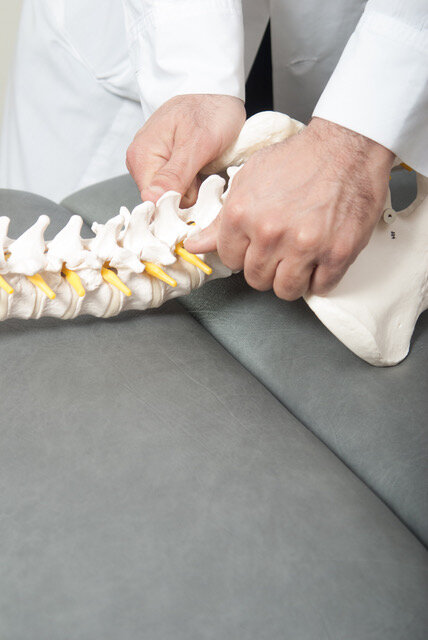Manual Therapy
Manual Therapy can be defined as “the use of hands in a curative and healing manner, or a hands-on technique with therapeutic intent” (Lederman, 2005). It is an old form of healing and therapeutic practices found in many ancient cultures, such as Egyptian, Chinese, and Indian to name a few (Bishop et al., 2015). In his early scripts, Hippocrates described different manual therapy techniques for muscles and joints (Bishop et al., 2015).
Currently, manual therapy in its myriad techniques and variations, is practiced by many different professions, such as osteopaths, chiropractors, physical therapists, massage therapists, and vary from profession to profession. Furthermore, manual therapy techniques are usually described by the tissue they are targeted towards. Whether it’s a joint, muscle, connective tissue, or nerve, they are all directed at the neurovascular system (Bishop et al., 2015).
Physical therapists have contributed significantly to the current diversity of manual therapy approaches and techniques (Physiopedia, 2020). One of the greatest minds in Physical Manual Therapy, and the developer of a well-known and followed manual therapy concept is G.D. Maitland, who stated that advances in modern technology and computers have helped establish manual therapy as a concept, rather than empiric treatment (Maitland, 1986). The International Federation of Orthopedic Manipulative Physical Therapists (IFOMPT) defines manual therapy techniques as "Skilled hand movements intended to produce any or all of the following effects: improve tissue extensibility; increase range of motion of the joint complex; mobilize or manipulate soft tissues and joints; induce relaxation; change muscle function; modulate pain; and reduce soft tissue swelling, inflammation or movement restriction."(Physiopedia, 2020)
However, manual therapy is not solely about the manipulation of a particular tissue or single joint. It encompasses the entire process of patient management, from the time of subjective or objective examination, to choosing treatment techniques, followed by assessment and re-assessment of patient condition, which includes neuromuscular re-education and patient cognitive behavioral response. These are all part of the process of clinical reasoning (Bishop et al., 2015; Maitland, 1986).
Advanced knowledge of anatomy, physiology and biomechanics, is essential to developing the skills to become a manual therapy practitioner. For example, manipulations and mobilizations are aimed at the joint range of motion that goes beyond the active or passive physiological range. Additionally, manipulation can create movement of 6 mm translation force in the vertebral segment. This technique leads to structural changes in the joint, increase fluid uptake in soft tissue structures around it, as well as reduce joint stiffness in the intervention area (Bishop et al., 2015).
Manual therapy is one of the many therapies widely used to treat chronic musculoskeletal pain using evidence-based approaches. Austin (2018) investigated manual therapy efficacy focusing mainly on joint mobilization, manipulation and massage. These techniques showed favorable results in treating different chronic musculoskeletal pain. However, most studies he examined made a clear distinction between passive joint mobilizations, manipulation techniques, and soft tissue massage. Austin (2018) found strong evidence that manipulation and mobilization techniques are very effective in relieving neck and shoulder pain, especially when instructions and exercise are added to treatment, while the benefits of soft tissue massage techniques alone still remain unclear. However, Chinese massage and strain counterstain technique is still found to be better than no treatment at all (Austin, 2018). Additionally, mobilizations and manipulation alone were found to be very effective in reducing pain, increasing range of motion, and improving quality of life in patients with chronic lower back pain (Austin, 2018; Bishop et al., 2015). In cases of chronic shoulder pain there is strong evidence that the use of joint mobilization and manipulation, when incorporated with exercise, yield positive outcomes (Austin, 2018).
On a personal note, experiencing manual therapy as a patient - while still a student - was a blessing in disguise, as it helped me acknowledge the immediate results and benefits it provides. I was drawn to the attention to detail which helps with the clinical reasoning process and the exclusive interaction with the patient in assessing all aspects of his or her condition. Additionally, manual therapy helps promote a deeper understanding in patients, which in my opinion is crucial for the healing process over long term. For me, the idea of being able to help improve someone’s quality of life with my bare hands, without requiring special equipment or space, was, and still is, a most appealing idea to me, and drove my choice to become a manual physical therapist.
I hope this information helps you make the right therapeutic decision for you.
Tova
References
Austin, P (2018). Efficacy of manual therapy for chronic musculoskeletal pain. Co-Kinetic Journal, 76(April),32-40. Retrieved June 18, 2020, from https://www.co-kinetic.com/content/efficacy-of-manual-therapy-for-chronic-musculoskeletal-pain-article
Bishop, M. D., Torres-Cueco, R., Gay, C. W., Lluch-Girbés, E., Beneciuk, J. M., & Bialosky, J. E. (2015). What effect can manual therapy have on a patient's pain experience?. Pain management, 5(6), 455–464. https://doi.org/10.2217/pmt.15.39
Lederman, E., (2005). The Science and Practice of Manual therapy. (2nd ed.). London, UK: Elsevier.
Maitland, G.D. (1986). Vertebral Manipulation. (5Th ed.). Boston, MA: Butterworth.
Manual Therapy. (2020, July 16). Physiopedia. Retrieved 13:02, August 27, 2020 from https://www.physio-pedia.com/index.php?title=Manual_Therapy&oldid=242813.

